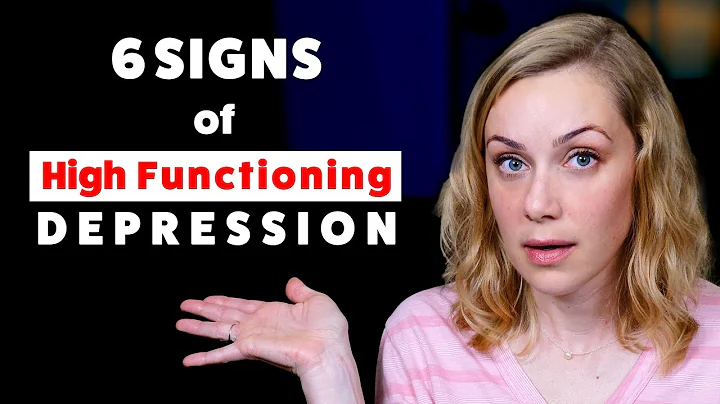19 counseling principles combined with "11 classic questions in psychological counseling interviews" are more effective
1. Use non-pathological means to open the door to possibility
·When "redescribe" the problem in a "normalized" way, hope and possibility arise, and the problem becomes better solved.
· Pay attention to finding some exceptions to the problem, and infer that the solution to the problem exists.
·For example: For a student who was sent to receive psychological counseling due to hysterical problems, the complained behavior can be redescribed as "very energetic". This is a non-pathological term. This method of downplaying the problem can reduce the other party's resistance, because this normalizes the problem. When talking to students about how you can control your energy and not let your hysteria control your moments, you should encourage them to work hard to control the problems that are bothering you.

2. There is no need to improve insight
. It is interesting to have insight, but it does not tell us how to change the status quo. As mentioned earlier, knowing why we are facing the status quo does not provide a solution.
·In fact, when students discover why they are sad, angry, or shy, they usually use this information as a reason and excuse for not being successful.
·Helping TAs notice their abilities is exactly what we need to do. The easiest way to pay attention to a certain student's abilities is to pay attention to whether the problem arises when we first meet with him.
·For example: A child who was sent to the counselor's office because of being taciturn in class will open his heart to the counselor and talk for 20 minutes. If the counselor asks the student “How did you do it and talk to me for 20 minutes without stopping”, the counselor and the student may both notice some exceptions to the teacher’s concern. Based on students’ answers and the counselor’s observations, a task to solve the problem can be formulated.

3. There is no need to understand too much about complaining about it
. School teachers have limited time, and it is not recommended to spend energy to collect past historical information.
·When talking about this issue, you can call it "it" or "the problem" in the language of the student. This is a protection for students, while mitigating the threats they perceive, and the same goes for counselors.
·Just calling the problem "the situation" can help students become more calm in times of crisis, which will make students feel confident in the teacher, and will create an atmosphere of mutual trust between students and teachers.
4, students, teachers, administrators and parents complain, not the disease
· Anyone who has ever been tagged knows how this will change self-perception.
·If students complain, it is not a disease. If we respond in a positive way, we can find a solution to the problem.
·Example: A client who claims to suffer from manic depression, has a tendency to commit suicide, loves to go to extremes, and presents symptoms of traumatic stress and insanity. After knowing such a pathological summary, I looked at her and said, "You look like a normal person. Can we put aside this conclusion for the time being and just talk about what makes you want to change yourself?

5. Students and teachers are more motivated when determining their goals
·Some of the best strategies to solve the problems faced by students, teachers and parents come from these groups themselves.
·There are many solutions to problems that are particularly simple in themselves, and are usually related to correcting specific behaviors. These solutions are developed based on exceptions, and feedback is given after listening to teachers, students and parents' descriptions of exceptions, and setting feasible tasks for them.
·The key to helping students, teachers and parents solve problems is whether they can listen carefully to their descriptions of "what needs to be done to change" and ask them what has changed.
6. When a person changes, it will produce snowball effect
·Students usually come to seek help when they feel lonely and helpless. They imagine that if parents or teachers are difficult to deal with, they will refuse to cooperate.
·The methods that students have tried in the past may not work at one moment, but may work at other moments, such as when changing teachers. Even if you just encourage students or parents to "do something different next time", it may lead to changes in the situation when communicating with them.

7. Complex problems do not necessarily have to use complex solutions
· Focus on "using methods that worked in the past" can have an impact on certain behaviors, resulting in the method becoming increasingly ineffective, thus forming a vicious cycle of problems.
·The successes achieved in similar situations should be paid attention to and help people apply this method in similar situations.
8. Adapting to students' worldview can reduce resistance and encourage students to adopt a cooperative attitude
·Hinting to young students that they must change, and sometimes it does not necessarily guarantee that they will definitely change - this is due to the nature of young people.
·However, "unity" with a certain student, entering his worldview, and making him forget the pressure from his teachers, parents and principals, this is the fastest way to solve the problem.
·If the teacher, parents and principal are determined not to change their position, the student will lose the way to seek help and can only find ways to get rid of the pressure on the teacher, parents and principal on himself. The end result is the same: the student's behavior will change, and others will react differently.

9. Motivation plays a key role and can jointly deal with problems with students, thereby motivating TAs to change behaviors
·In many cases, because people do not know what they want to become, they lack motivation, and TAs do not have a specific goal in their minds.
·Another reason for lack of motivation is because the student feels that the problem is not caused by TA's mistake, but by others. Students, teachers and parents all want to improve the situation.
·The way to find the motivation is to ask directly: "Are you willing to do something that makes things better?" If the answer is "yes", then you have found a visitor; if the answer is "no", then let the students know that when the TA needs it, they can come back to you immediately and you will be able to help at any time.
10. If we cooperate, we will not be resistant to
. We should seek unity, sympathy and communicate with them simply in language. Children are easily accepted by praise and affirmation, and are easily accepted.
·For a student who often fights, you can think that he wants to control something in life. Following this idea, he can cater to the needs of students and get closer, and he can find the possibility of solving the problem, rather than making the problem permanent.

11. If the method is feasible, don't modify it; if it doesn't work, try other methods
. For those students who repeatedly insist on adopting invalid strategies, you can ask the following question: "Is this useful?" This is one of the most helpful questions. Sometimes, when you tell them that they have previously taken a furious slamming the door or fighting in the bathroom, it may sound ridiculous to ask.
·If you ask the same student the question "What method is useful for you" will make the tutoring more effective. This question can make TA recall those examples of successful interventions. Based on past success experiences, tasks that need to be completed in the next few days or weeks can be formulated, no matter how trivial these successes may be.
12. Focus on things that can be solved and changed can reduce frustration
· Daily comments and questions can encourage students to achieve short-term and long-term success.
·The tasks we determine for kindergarten children will not exceed one afternoon, and for a sixth grade student, the time will not exceed two days.In middle school, the longest task implementation time is two days to one week. Completing a task in a short time is more feasible than trying to change student behavior throughout the semester.

13. Step by step, focus on those tasks that can achieve success
·Telling students not to be rush to achieve success in their work. Usually, if we disagree with teenagers’ changes, TA will change by themselves.
·并子子子子子子子子子子子子子子子子子子子子子子子子子子子子子子子子子子子子子子子子子子子子子子子子子子子子子子子子子子子子子子子子子子子子子子子子子子子子子子子子子子
·In fact, focusing on overcoming difficulties and not allowing students to return to a state controlled by problems is the basis for success.
14. If we can confirm exceptions, rapid change is possible.
15. Change is a continuous process.
· Ask an example: Have you noticed the very subtle changes that (someone) have occurred in other situations?
·Did you play a role in promoting this change? How did you do it? What do you think of the change of TA?
16. Each complaining pattern contains some exceptions - insist on observing
·Many times, minutes, hours or days are used to calculate the time when students do homework or are not disturbed by problems at home, so that the problem looks better solved and can reduce the intrusion of problems on life.

17. Changing time and place will change the interaction between teachers and students and student behavior
·Choose to send students back to the classroom at a better time, which can give TA a new view. If possible, encourage the teacher to talk to him and ask the same question. Working together to change time and place will benefit both parties according to the most effective method.
18. Looking at the problem from a different perspective will help find solutions
·Redescribe ADHD as "energetic", redescribe depression as "angry and sadness", or redescribe withdrawal as "privacy", then this feeling will change and let them see hope.
19. What will happen when the problem is solved?
·This method of temporarily leaving the problem aside can more clearly show the life without problems and let TAs imagine what specific behaviors they and others should have. The central idea of "SFBT therapy" is to create the possibility of solving problems.
·If people cannot look at life beyond problems, they cannot see their abilities. "SFBT therapy" encourages educators to discover abilities from students in a comprehensive way, and as abilities are constantly discovered and mentioned, problems become easy to solve.

19 tutoring principles combined with "11 classic questions for psychological counseling interviews" are more effective











